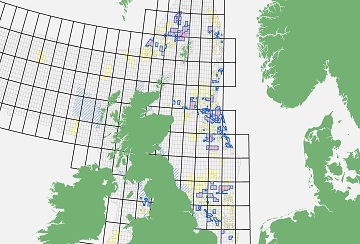The North Sea Transition Authority (NSTA) said 115 applications have been received for the UK’s 33rd offshore oil and gas licensing round.
The bids are across 258 blocks and part-blocks from a total of 76 companies.
“The process, which will provide a significant boost to the UK’s energy security, opened on 7 October and offered acreage across the North Sea,” said the NSTA.
“It included four priority areas, which have known hydrocarbons (oil and gas), in which there was very keen interest and could see production in as little as 18 months.
“The round has attracted similar interest to the 32nd Licensing Round in 2019 which received 104 applications from 245 blocks and part-blocks.
“In 2019 a total of 768 blocks and part-blocks were offered, compared with 931 this year.”
The NSTA said the bids will now be studied with a view to awarding licences quickly and supporting licensees to go into production as soon as appropriate.
There are several necessary consents after licensing and before production to ensure these developments are also in line with net zero.
“Internal analysis by the North Sea Transition Authority (NSTA) shows that the average time between the dates of recent discoveries and first production has been close to five years, and it is hoped that, since they consist of existing discoveries, the priority cluster areas can go into production in an even shorter time,” said the NSTA.
“The round is a key part of the NSTA’s drive to support UK energy security, which also includes licensing the Rough gas storage facility, and encouraging operators to look at reopening closed wells.
“Oil and gas currently contribute around three quarters of domestic energy needs and official forecasts show that, even as demand is reduced, they will continue to play a role.
“As we transition, maintaining a clean domestic supply to meet that demand can support energy security, jobs, and the UK’s world class supply chain.
“The drive to reach net zero greenhouse gas emissions by 2050 continues alongside the drive for energy security and they support each other.
“New developments tend to have lower emissions than older fields so can contribute to reducing average production emissions.
“Consuming gas from the North Sea also reduces the need to consume LNG from elsewhere which has around double the carbon footprint.
“Production emissions have been cut by more than a fifth between 2018 and 2021.
“Projections indicate the sector is on track to meet reduction targets of 10% by 2025 and 25% by 2027 – agreed in the North Sea Transition Deal in 2021.
“Since February last year, NSTA interventions have prevented the lifetime emission of 1.4 million tonnes of CO2e, equivalent to taking more than 500,000 cars off the road for a year.”
NSTA Head of Exploration and New Ventures Nick Richardson said: “We have seen a strong response from industry to the Round, which has exceeded application levels compared to previous rounds.
“We will now be working hard to analyse the applications with a view to awarding the first licences from the second quarter of 2023.”
The UK’s Energy and Climate Minister Graham Stuart said: “Putin’s illegal invasion of Ukraine has led to volatile global energy markets.
It’s fantastic to see such interest from industry in this round, with the awarded licences set to play an important role in boosting domestic energy production and securing the UK’s long-term energy security of supply.”
